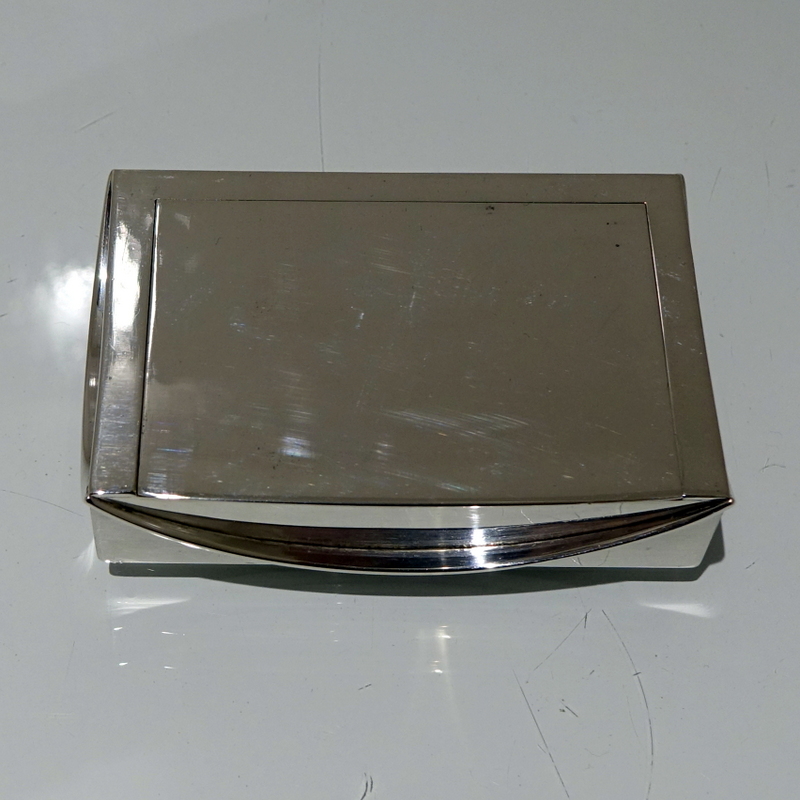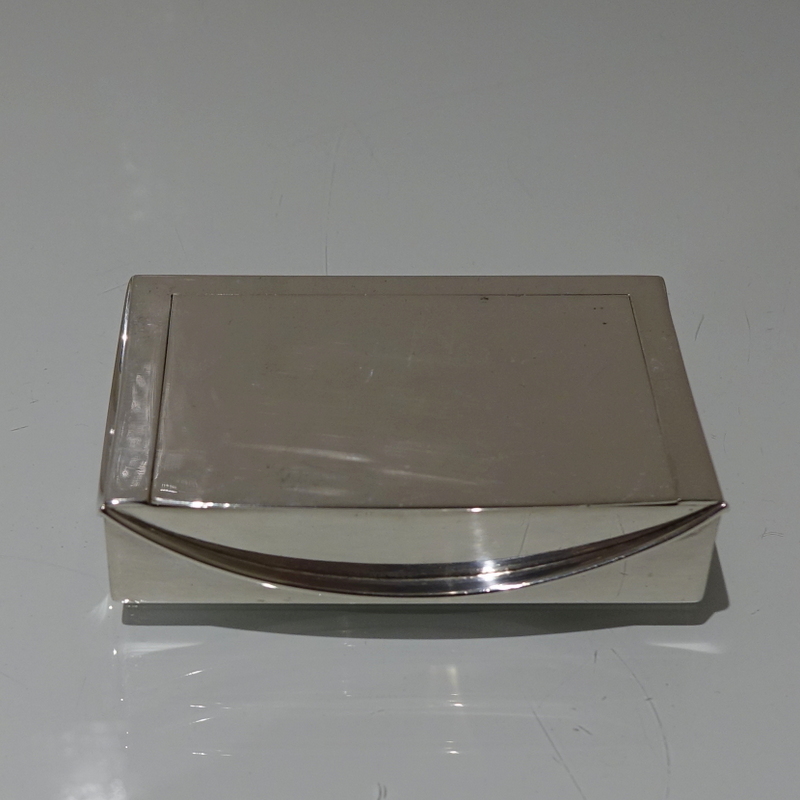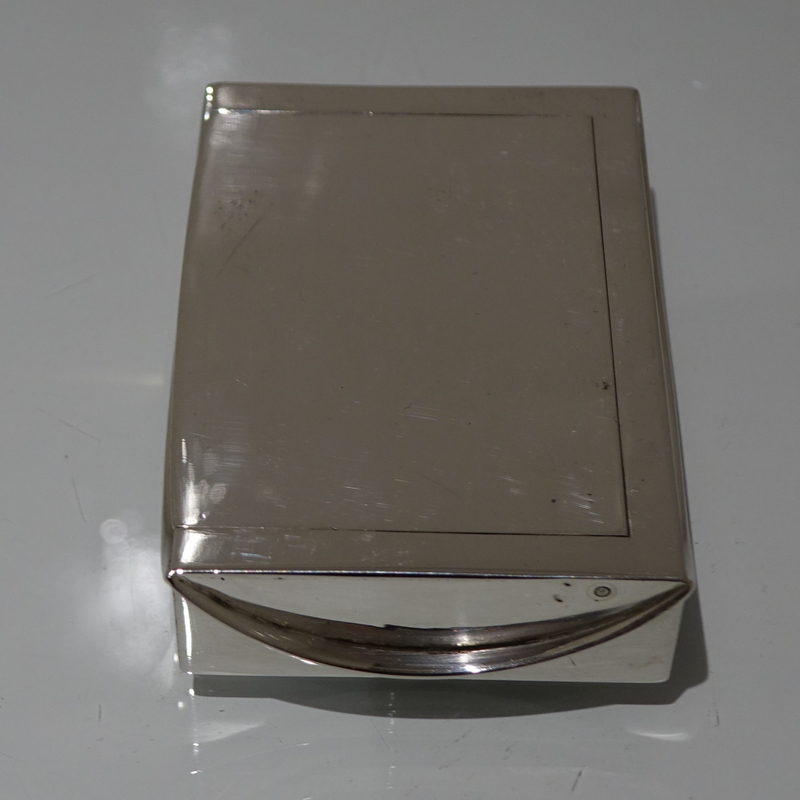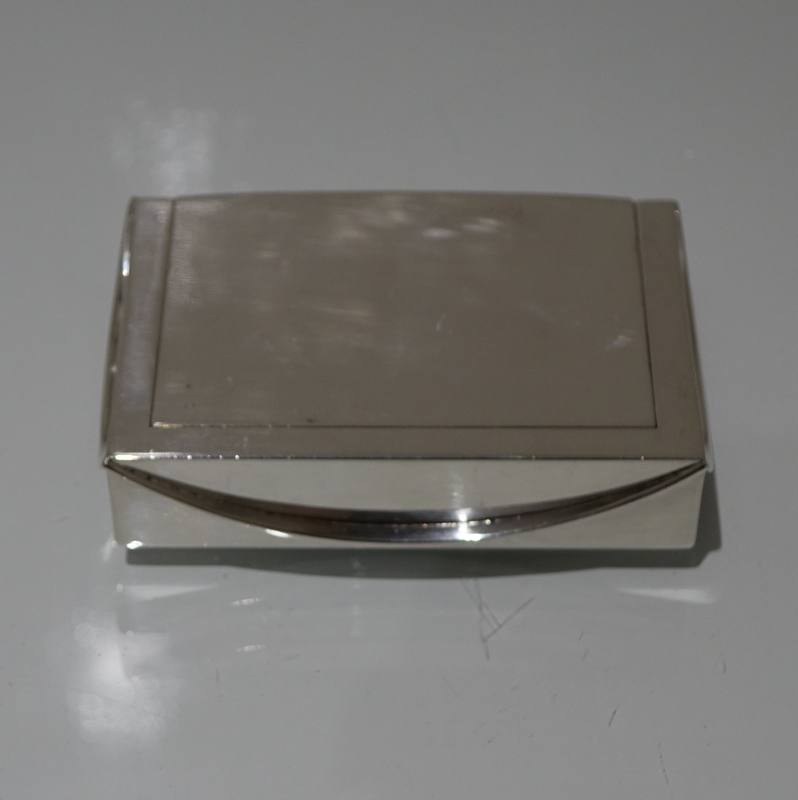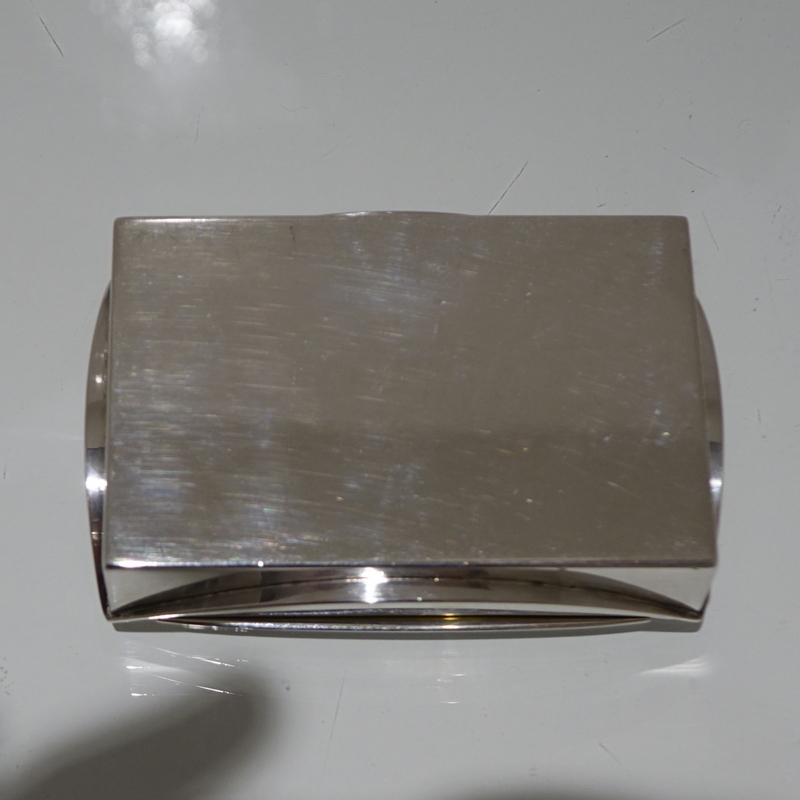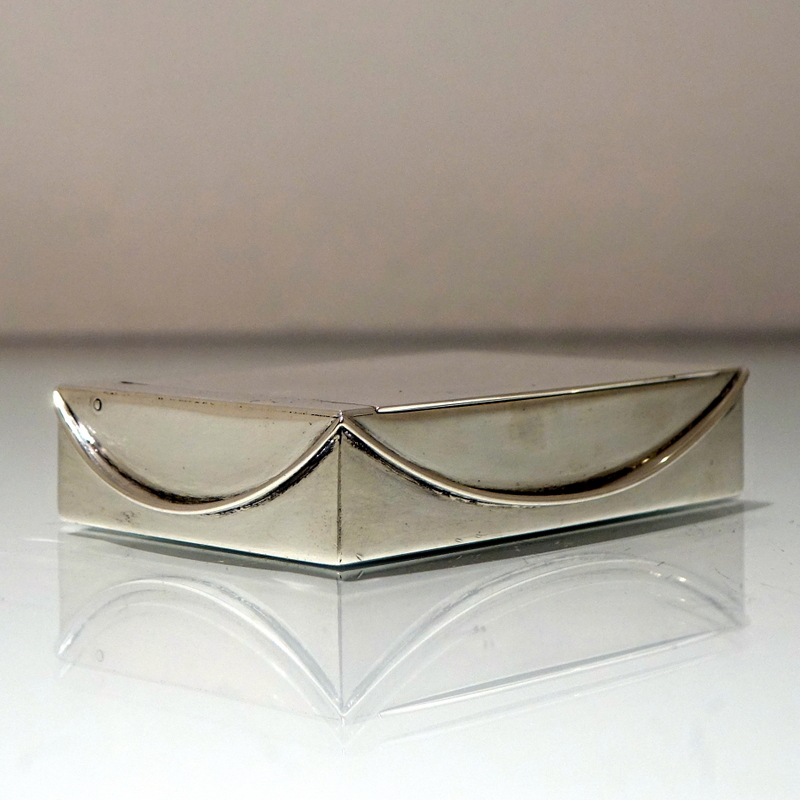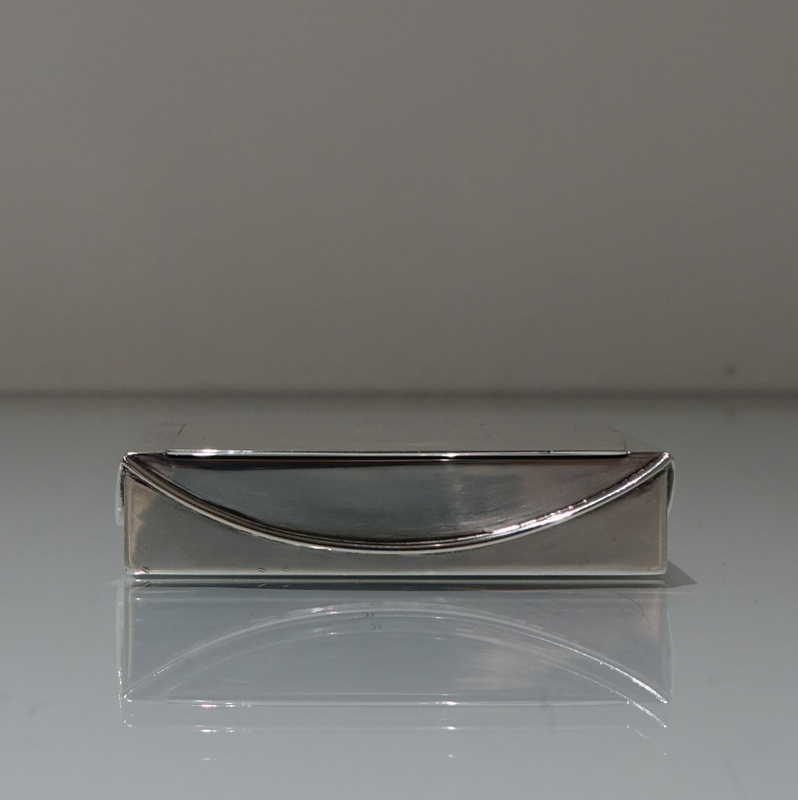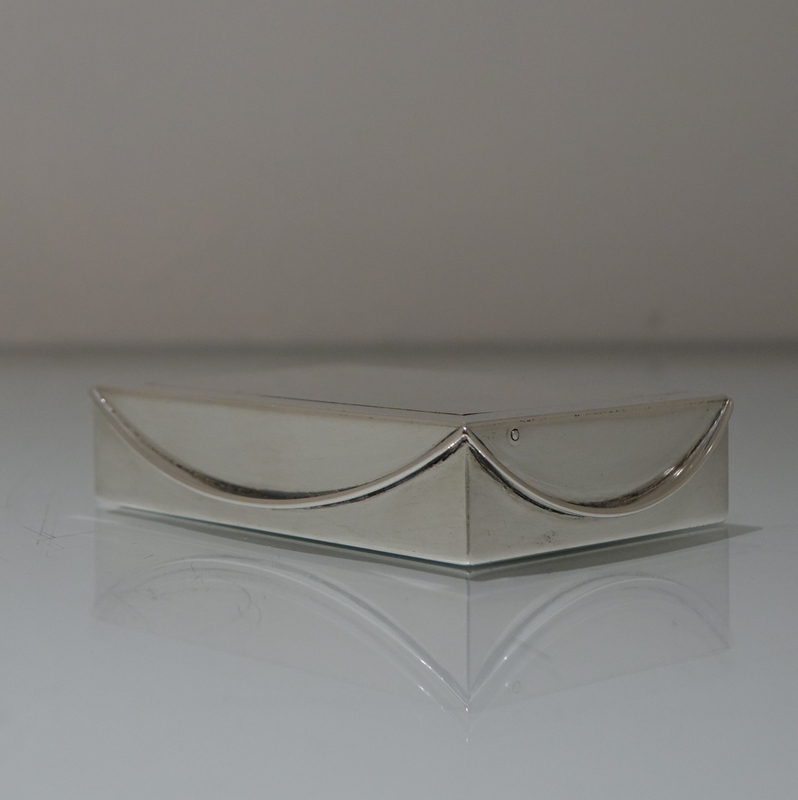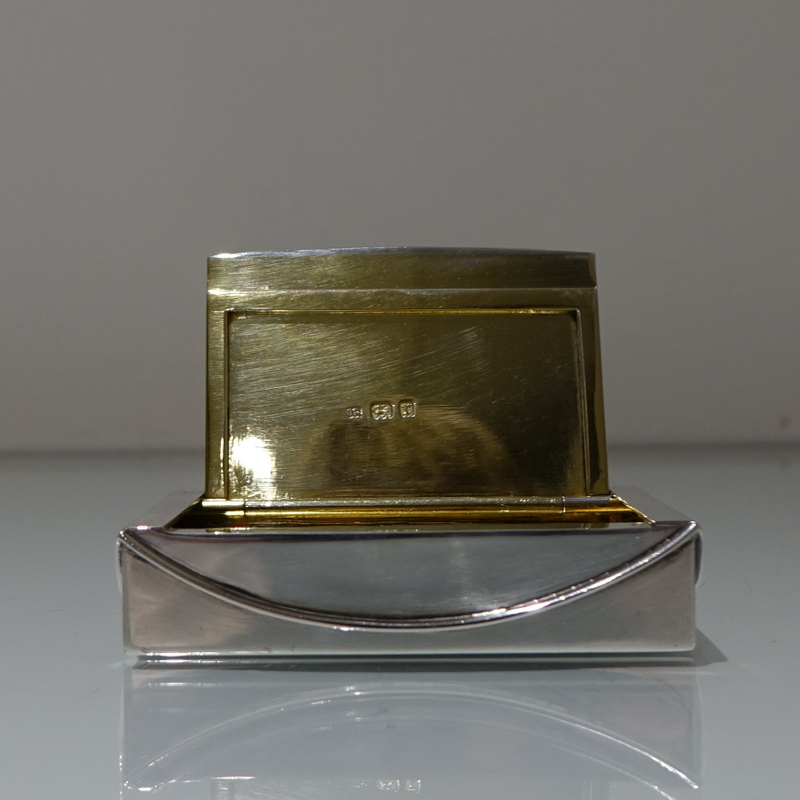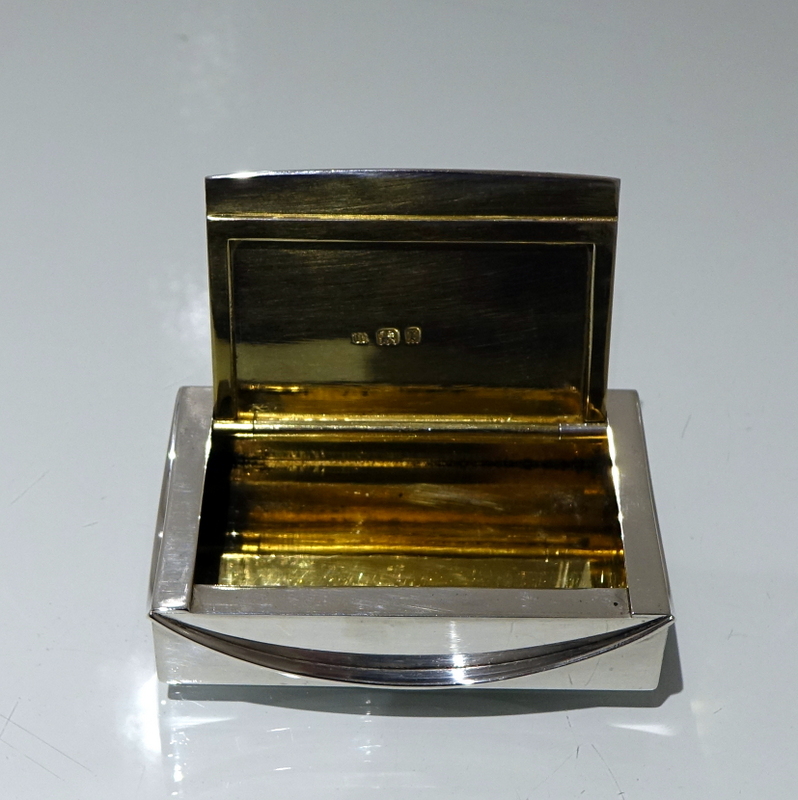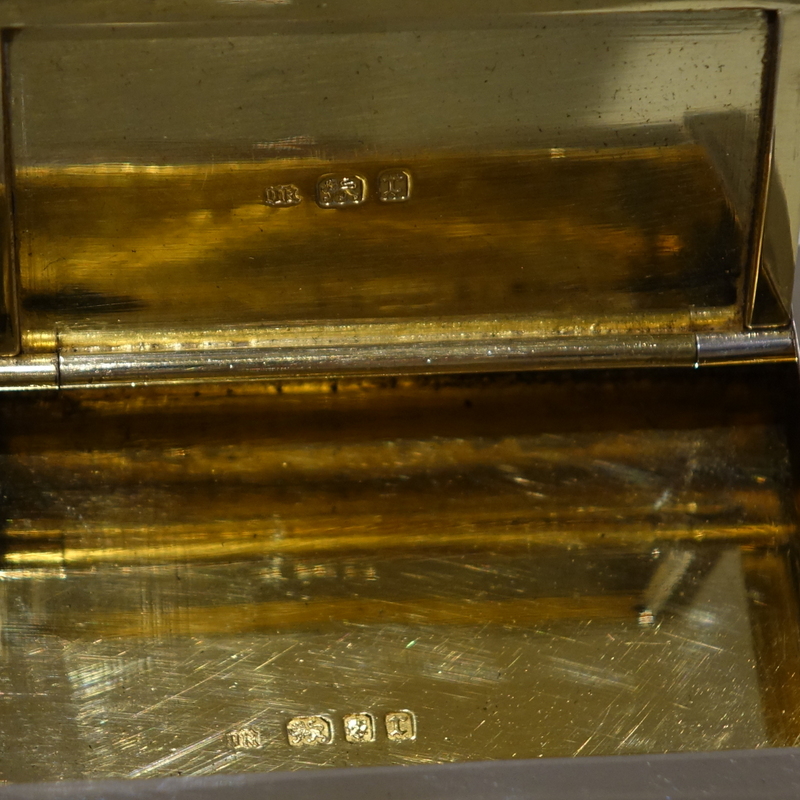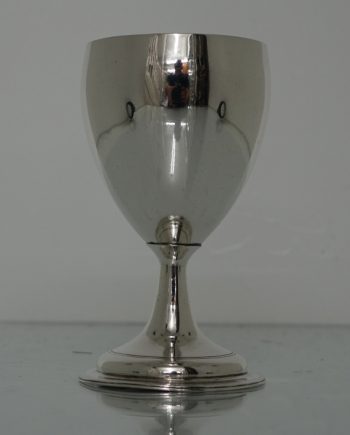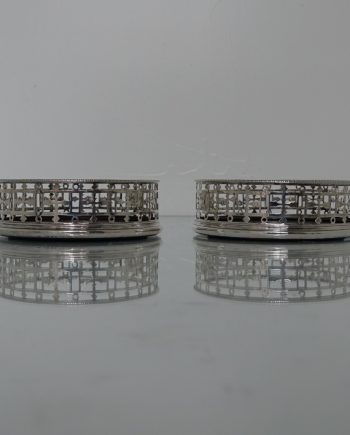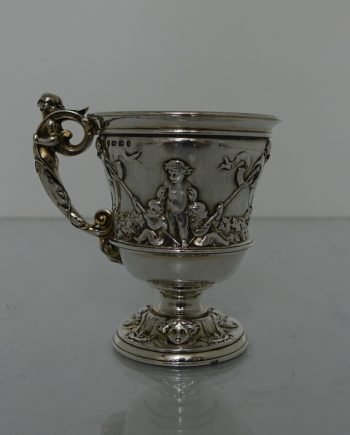Description
An extremely collectable “Omar Ramsden” rectangular plain formed snuff box decorated with a stylish but simple applied hanging ribbon border on all four sides of the body. The lid is hinged and the interior of the box is elegantly silver-gilt.
Weight: 5.4 troy ounces/170 grams
Length: 3.7 inches/9.5cm
Width: 2.5 inches/6.3cm
Condition: Excellent throughout
Price: £1250
Omar Ramsden (born Sheffield, 21 Aug 1873; died London, 9 Aug 1939). The son of a silver and electroplate manufacturer, he was apprenticed to a company of silversmiths and attended evening classes at Sheffield School of Art where he met Alwyn Carr (1872-1940) and then both had summer classes at the Royal College of Art of London. In 1898 Ramsden set up a partnership with Alwyn Carr and opened a studio in Chelsea (London) moving soon after the workshop to Fulham. Later the studio and the workshop were reunited in the same location in Seymour Place (St. Dunstan’s building). There they exploited the fashionable taste for handmade silver of the Arts and Crafts Movement and, with the help of skilled artisans, made articles adapted from Gothic and Renaissance designs with Celtic-style inscriptions, which became their trademark. In 1898 Ramsden was the winner of a competition to design a Mace for the City of Sheffield and this artefact, entirely made from hand-beaten silver, was one of the first works of the Ramsden & Carr partnership. Ramsden, unlike Carr, rarely executed a piece himself but the studios success was dependent on his direction and public relations. In 1914, at the outbreak of WWI, Carr enlisted in the Army and in 1915 left for France. Due to the war the partnership dissolved in 1919 and Omar Ramsden retained the studio creating a name for himself as an independent maker. Proving to be an early brand marketeer he engraved many of his pieces with the trademark “OMAR RAMSDEN ME FECIT” (Latin: ‘Omar Ramsden made me’), an innovation at the time. During the 1930s Ramsden had up to 20 assistants working for him but he never worked on a piece himself. Omar Ramsden died in 1939 and his wife Annie ensured the business kept going for some time after his death. Omar Ramsden is considered a master of 20th century British silversmithing and his works are avidly researched by many enthusiast collectors.



